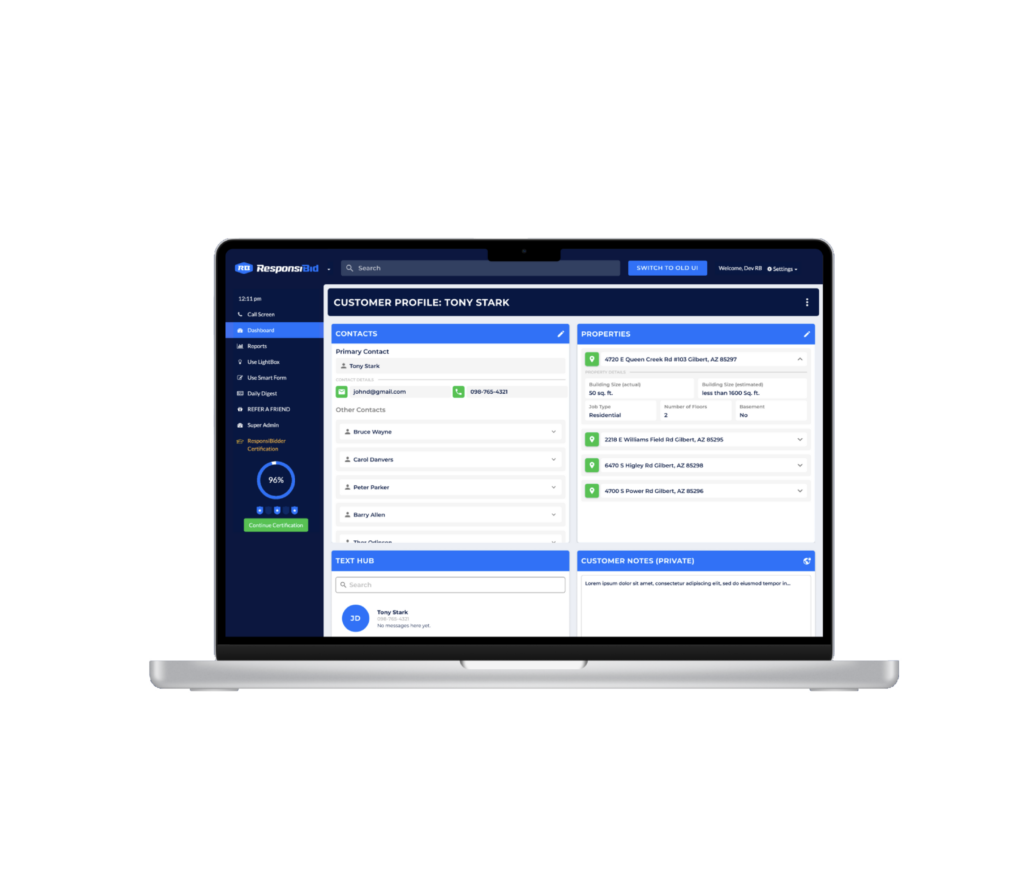Maximizing Client Relationships: A Guide to Effective Customer Management

Effective customer management is crucial for the growth and sustainability in the home service industry. Properly organized client information can drive better sales, enhance customer satisfaction, and streamline operations. Here’s how you can manage and leverage customer data to your advantage.
1. Centralized Customer Profiles
A centralized customer profile system allows you to keep all essential information in one place. This includes contact details, service history, communication logs, property information, and customer notes. By having a comprehensive view of your customers, you can provide personalized services, tailor marketing efforts, and quickly address any concerns that may arise.
Example: Imagine knowing that a customer has a specific preference for certain services or requires special access instructions. Keeping such notes in their profile ensures that your team can deliver a seamless experience every time, making the customer feel valued and understood.
2. Tracking and Utilizing Customer Notes
Adding detailed notes to customer profiles helps maintain a high level of service consistency. Whether it’s a gate code for entry, the name of a family pet, or specific job instructions, these notes can be critical in ensuring the job is done right the first time. It also helps when assigning jobs to new team members, as they can quickly get up to speed on the customer’s preferences and requirements.
For example, if a customer has previously mentioned that they have a nervous dog, including this note ensures that your technicians approach the property in a way that minimizes stress for the pet. Similarly, noting that a customer prefers early morning appointments can help in scheduling future services in a way that maximizes satisfaction.
3. Effective Communication Tracking
Tracking all communications with your customers is vital for maintaining strong relationships. Whether through emails, text messages, or phone calls, keeping a log ensures that you never miss a follow-up or forget a previous conversation. This prevents misunderstandings and helps you respond promptly to customer inquiries. It also ensures that all team members are on the same page, even if they weren’t involved in earlier communications.
4. Automating Follow-Ups
Automation is a powerful tool that can significantly reduce the time spent on repetitive tasks. Automated follow-ups can ensure that your customers are consistently reminded of upcoming appointments, promotional offers, or requests for feedback. This not only improves customer retention but also frees up your time to focus on growing your business.
Why It Matters: Following up with customers after a job is finished can increase the likelihood of repeat business. For instance, a simple “Thank you” message after a service, followed by a reminder about other services you offer, keeps your business top of mind. Automation ensures these touchpoints happen at the right time without you having to remember every detail.
5. Streamlined Property Management
For businesses in the home service industry, managing multiple properties for a single client can be challenging. A well-organized system that links multiple properties to a single customer profile allows for easier scheduling, service customization, and billing accuracy. This is particularly useful for customers who own several rental properties or commercial buildings.
Example: A property management company might require regular maintenance on multiple sites. Having all this information under one profile allows you to schedule visits efficiently, reducing travel time and ensuring that no property is overlooked.
Conclusion
Effective customer management is more than just storing data—it’s about using that data strategically to enhance your service offerings, build stronger customer relationships, and ultimately drive your business forward. By centralizing information, automating processes, and utilizing reports, you can create a customer-centric approach that benefits both your clients and your bottom line.